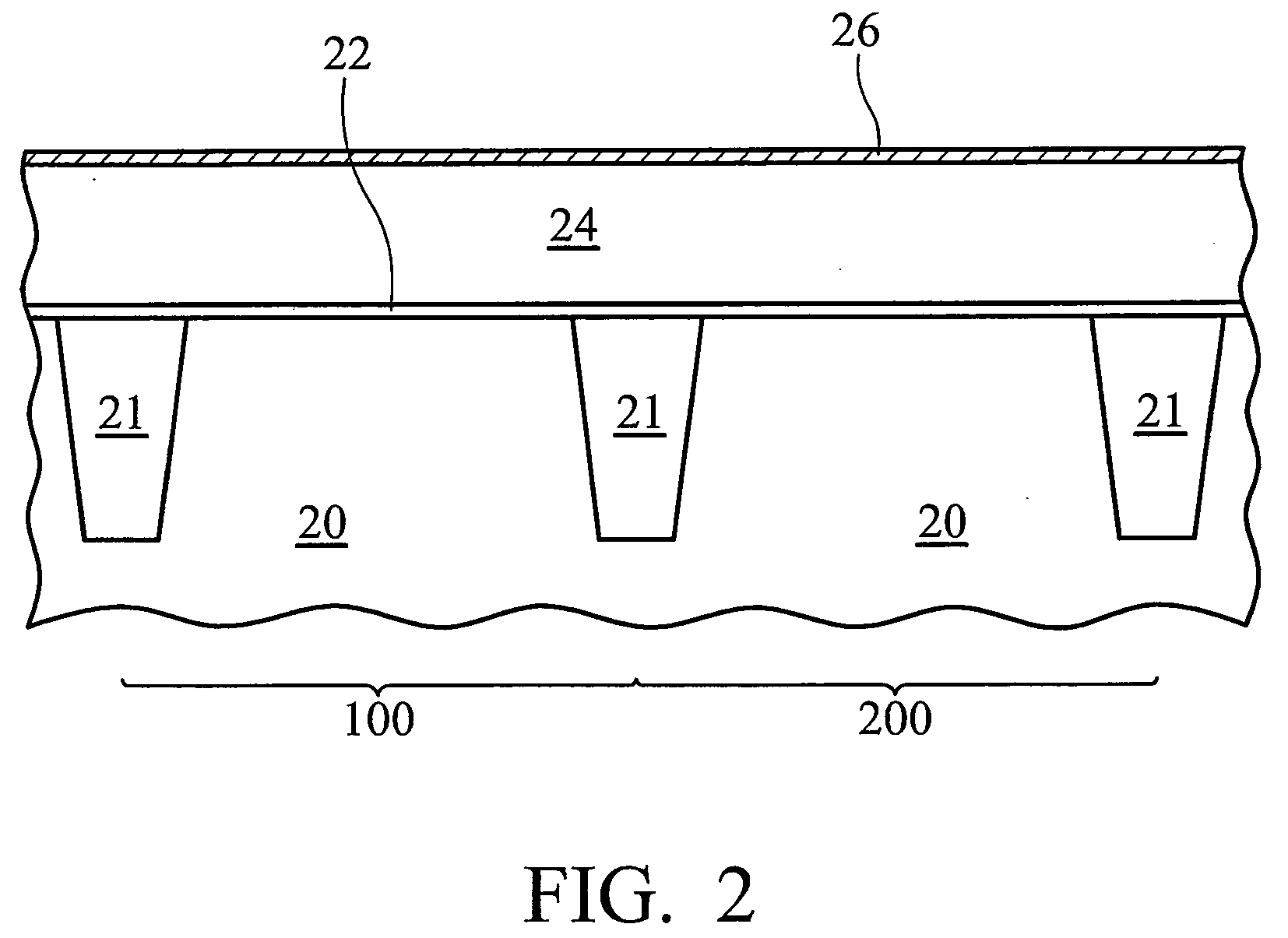Electron mobility enhancement for MOS devices with nitrided polysilicon re-oxidation
- Summary
- Abstract
- Description
- Claims
- Application Information
AI Technical Summary
Problems solved by technology
Method used
Image
Examples
first embodiment
[0022]In a first embodiment, nitrided polysilicon re-oxidation layer 28 is formed by performing an oxidation step to form an oxide layer on the surface of substrate 20 and sidewalls of the gate stacks, and then nitridating the oxide layer to form nitrided polysilicon re-oxidation layer 28. The oxide layer may be formed by a rapid thermal oxidation (RTO), a furnace dry oxide anneal, or other commonly used oxidation methods. Preferably, the oxide layer is formed at an elevated temperature, for example, between about 400° C. and about 1100° C. in an environment comprising oxygen-containing gases. The preferred oxygen-containing gases may include O2, NO, N2O, NO2, O3, H2O, a combined gas of H2 and O2, and combinations thereof.
[0023]A nitridation is then performed to the oxide layer to convert the oxide layer to nitrided polysilicon re-oxidation layer 28. In the preferred embodiment, plasma nitridation is performed, wherein the process gases may include nitrogen-containing gases, such as...
second embodiment
[0024]In a second embodiment, the re-oxidation and nitridation are performed simultaneously. Preferably, the process gases include both oxygen and nitrogen containing gases, such as oxygen, NO, N2O, NO2, NH3, NO-based gases such as NO, N2O, NO2, and combinations thereof. Similarly, the simultaneous re-oxidation and nitridation may be performed with the assistance of plasma or under thermal conditions.
[0025]Referring to FIG. 5, photo resist 130 is formed and patterned to mask PMOS region 100. Lightly-doped drain / source (LDD) regions 232 and pocket regions (not shown) are then formed. As is known in the art, to form LDD regions 232, an implantation is performed to introduce n-type impurities into substrate 20 to form LDD regions 232. The implanted impurities penetrate nitrided re-oxidation layer 228 into substrate 20. Pocket regions are also formed by implanting p-type impurities. Photo resist 130 is then removed.
[0026]Referring to FIG. 6, photo resist 230 is formed and patterned to m...
PUM
 Login to View More
Login to View More Abstract
Description
Claims
Application Information
 Login to View More
Login to View More - R&D
- Intellectual Property
- Life Sciences
- Materials
- Tech Scout
- Unparalleled Data Quality
- Higher Quality Content
- 60% Fewer Hallucinations
Browse by: Latest US Patents, China's latest patents, Technical Efficacy Thesaurus, Application Domain, Technology Topic, Popular Technical Reports.
© 2025 PatSnap. All rights reserved.Legal|Privacy policy|Modern Slavery Act Transparency Statement|Sitemap|About US| Contact US: help@patsnap.com



